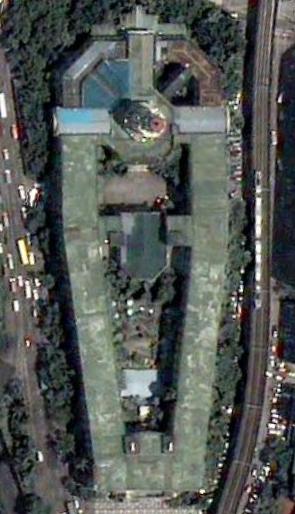

Manila City Hall Top View: A Stunning Aerial Perspective of a Philippine Landmark
Manila City Hall is one of the most iconic government structures in the Philippines, representing the heart of Manila’s local government operations and rich history. While many appreciate its impressive façade and central location, the Manila City Hall top view offers a breathtaking perspective often overlooked by ground-level visitors. This article dives into the fascinating details of the Manila City Hall’s architecture, historical significance, and practical tips for those interested in the panoramic views of this landmark from above.
Understanding the Manila City Hall
Before exploring the Manila City Hall top view, it is important to understand the historical and cultural relevance of this iconic structure:
- Location: Situated in the historic district of Ermita, Manila City Hall stands proud near other landmarks like the Rizal Park and Intramuros.
- Historical Background: Built in 1939 and completed in the early 1940s, the City Hall integrates neoclassical and beaux-arts architectural styles, making it an architectural masterpiece.
- Significant Features: The building is most famous for its massive clock tower, one of the largest in Asia, which dominates Manila’s skyline.
- Government Hub: It houses the Mayor’s office and various city government departments, making it a central operational hub for Manila’s governance.
The Architectural Beauty Seen from the Top View
From a top-down perspective, Manila City Hall reveals architectural details not apparent at ground level. The top view highlights:
- Clock Tower Design: The circular clock tower with its radial windows and monumental size is a focal point seen best from above.
- Symmetrical Layout: The building’s U-shaped design and wide patios are clearly visible, reflecting meticulous urban planning.
- Roof Details: Various sections of the roof show a mixture of red tiles and reinforced concrete slabs, blending durability and traditional aesthetics.
- Surrounding Urban Fabric: You get a bird’s eye view of how City Hall integrates with Manila’s busy street grid and nearby landmarks.
Manila City Hall Clock Tower – A Unique Architectural Feature
The clock tower is often described as the “Big Ben of the Philippines,” and from the aerial view, its size and design dominate the cityscape. It features:
- Four clock faces over 12 feet in diameter each
- A viewing deck at the top offering panoramic city views during rare public events
- Historical engravings and architectural embellishments visible only from a high vantage point
How to Get the Best Manila City Hall Top View Photos
Getting an excellent aerial or top view photo of Manila City Hall can be rewarding for photography enthusiasts, urban planners, and tourists. Here are practical tips:
- Use Nearby High-Rise Buildings: Buildings like the Bayleaf Hotel or nearby office towers provide excellent vantage points for shooting Manila City Hall from above.
- Drone Photography: For licensed drone operators, flying a drone above the City Hall complex (with proper permits) offers unmatched perspectives.
- Helicopter Tours: Occasionally, aerial tours over Manila provide opportunity shots of the City Hall and surrounding landmarks.
- Time Your Shots: Early morning or late afternoon light enhances shadows and architectural depth, creating dramatic photos.
- Weather Conditions: Clear skies give the best contrast and colors, but partially cloudy days can add interesting textures to aerial images.
Table: Quick View of Manila City Hall Top View Highlights
| Feature | Details | Best Viewing Time |
|---|---|---|
| Clock Tower | Largest in Asia, 12-ft clock faces, landmark symbol | Sunrise & Sunset |
| Roof Layout | U-shaped with red tiled and concrete sections | Midday for clear contrast |
| Surrounding Area | Ermita urban grid, neighboring parks and plazas | Golden Hour |
| Photo Opportunities | Drones, high-rise vantage points, aerial tours | Clear weather days |
Benefits of Exploring the Manila City Hall Top View
Exploring the Manila City Hall top view isn’t just about impressive photos – it has other distinct advantages:
- Cultural Appreciation: Viewing the monument from above helps deepen your appreciation for Manila’s history and urban architecture.
- Urban Planning Insight: It’s a case study in colonial-era civic design and how it functions within a modern metropolis.
- Travel Inspiration: Seeing landmarks from new angles inspires travelers and photographers to explore more city features keenly.
- Educational Value: Students of architecture, history, and public administration can better grasp government infrastructure layout.
Practical Tips for Visiting and Viewing Manila City Hall from Above
- Seek Permission: Certain rooftops or drone flights require approval from local authorities for safety and security reasons.
- Use Public Transit: Manila’s traffic can be daunting; use the LRT and other public transport options near City Hall for easy access.
- Stay Safe: Always prioritize safety when accessing elevated spots – use stable platforms and respect no-entry signs.
- Bring Proper Gear: DSLR cameras, wide-angle lenses, and drones (where legal) will maximize your capture quality.
Conclusion
The Manila City Hall top view reveals the city’s rich heritage and architectural ingenuity in ways that ground-level visits cannot. From its grand clock tower to the symmetrical rooftop designs, this perspective offers a unique photo opportunity and an educational glance into Manila’s urban landscape. Whether you are a history buff, photographer, traveler, or local government enthusiast, exploring the City Hall from above provides enriching insights and memorable experiences. Embrace this vantage point to fully appreciate one of the Philippines’ most emblematic civic landmarks.






